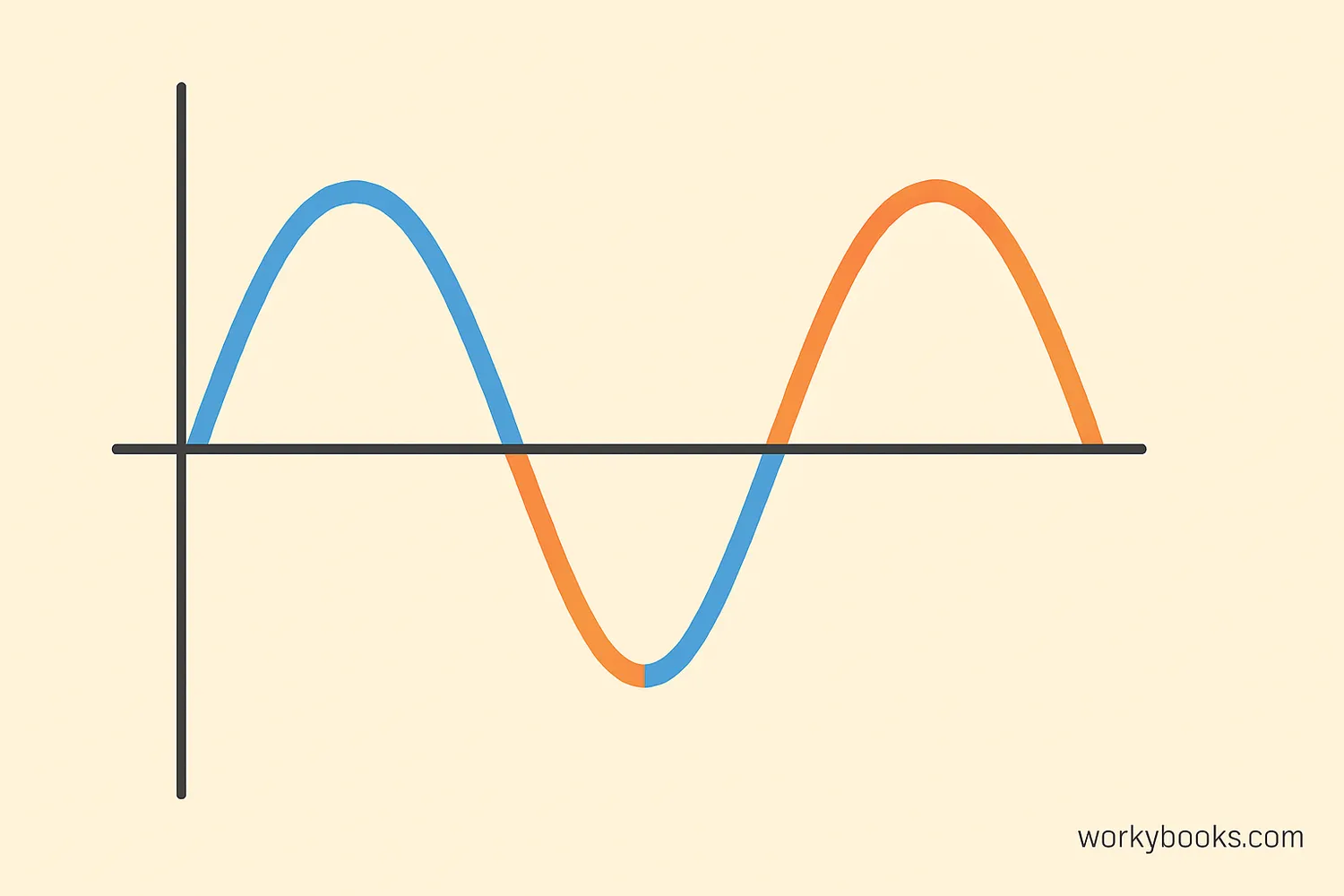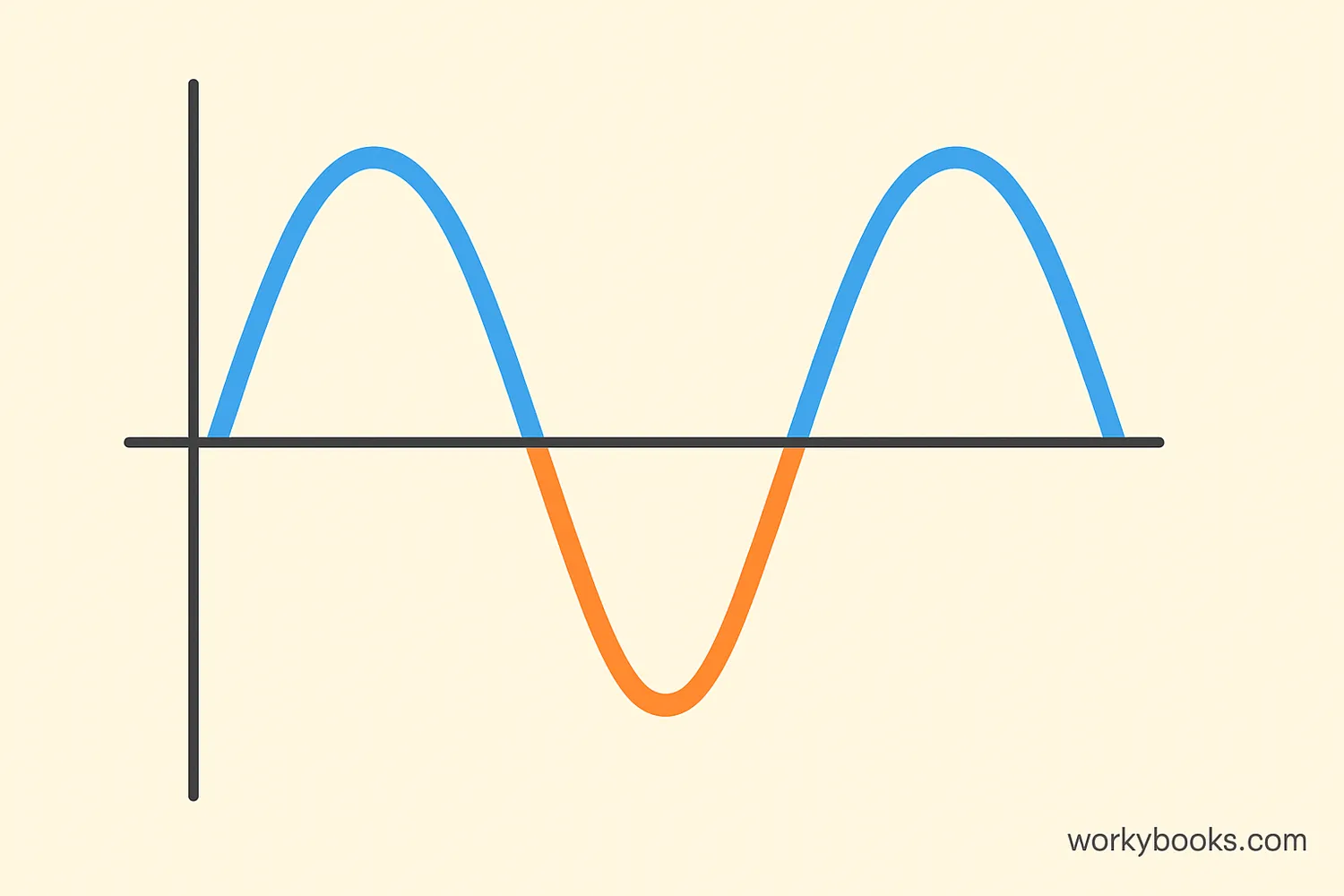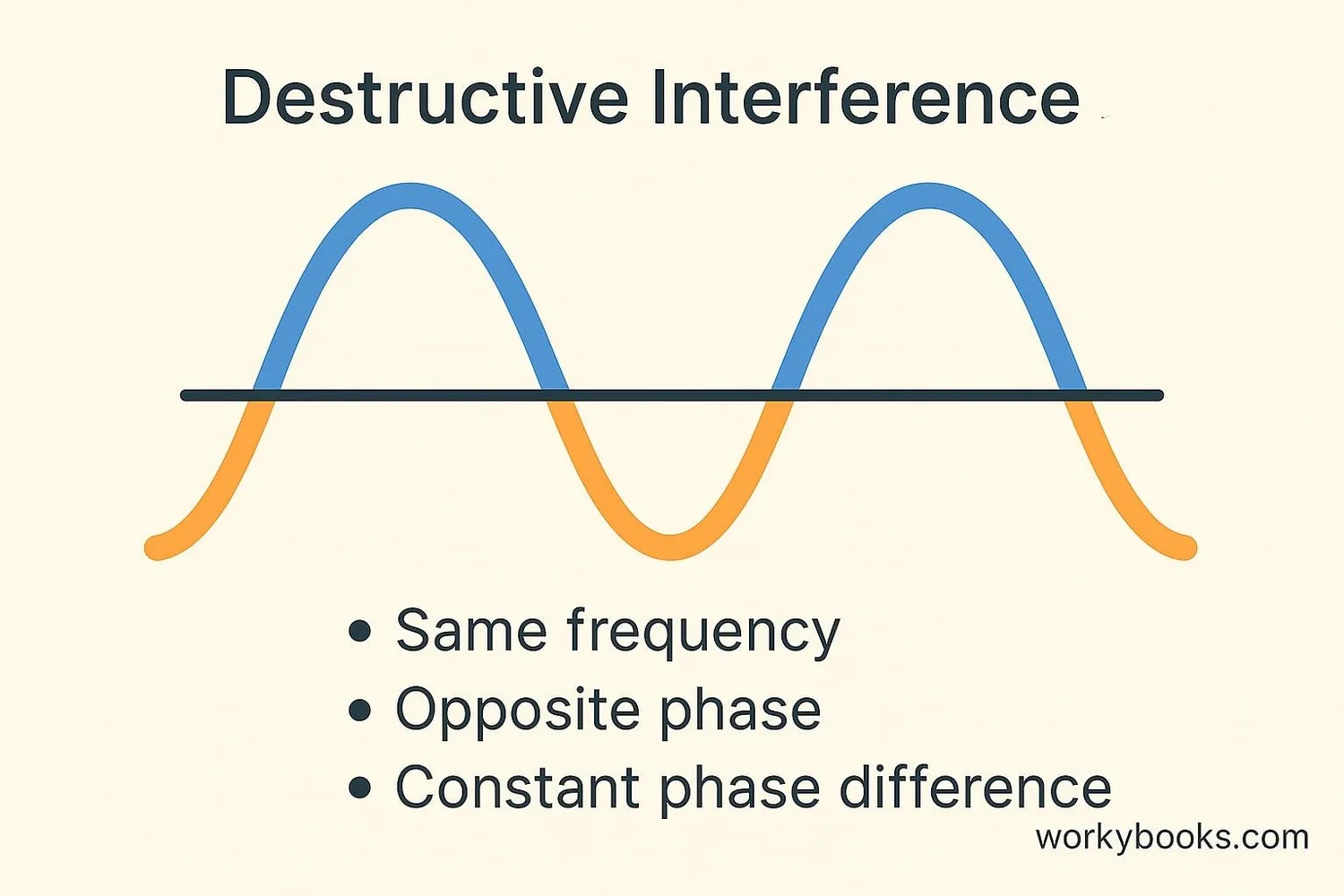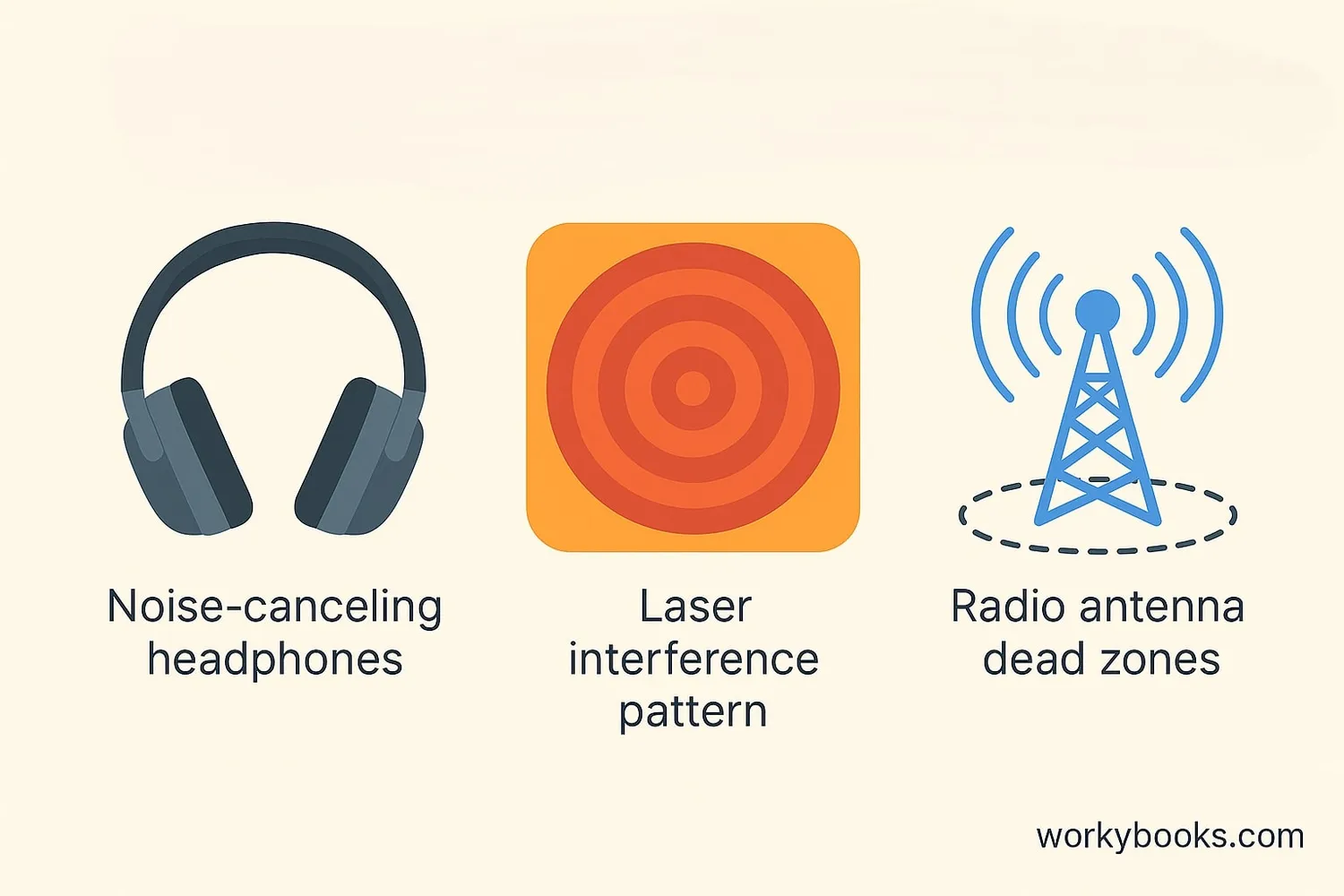Destructive Interference - Definition, Examples, Quiz, FAQ, Trivia
Discover how waves cancel each other out to create silence or darkness!
What is Destructive Interference?

Destructive interference happens when two waves meet and cancel each other out. Imagine two ocean waves crashing into each other - sometimes they combine to make a bigger wave (constructive interference), but other times they can actually cancel each other out!
This amazing wave behavior follows the principle of superposition, which means that when waves overlap, the resulting wave is simply the sum of the individual waves. When waves are perfectly out of sync, they can create silence (for sound waves) or darkness (for light waves).
Wave Fact!
Destructive interference is why some concert halls have "dead spots" where you can't hear the music well!
How Destructive Interference Works

Destructive interference occurs when waves meet in such a way that the crest (high point) of one wave aligns with the trough (low point) of another wave. When this happens, the waves effectively cancel each other out at that point.
For this to happen, the waves must have:
Same Frequency
They must be vibrating at the same rate
Opposite Phase
Peaks must align with troughs
Similar Amplitude
They should have similar heights
The mathematical condition for perfect destructive interference is:
Phase Matters!
Two waves can interfere destructively even if they started at different times, as long as they meet out of phase.
Conditions for Destructive Interference

For destructive interference to happen consistently, certain conditions must be met:
Same Frequency
The waves must have identical vibration rates
Constant Phase Difference
Their phase relationship must stay constant over time
Similar Amplitude
For complete cancellation, amplitudes should be equal
These conditions explain why destructive interference is common in controlled environments like laboratories, but less common in everyday situations where waves are constantly changing.
Real-World Examples
 Real-world applications of destructive interference
Real-world applications of destructive interference
Destructive interference isn't just a science concept - it has practical applications in our daily lives:
Noise-Canceling Headphones
They create sound waves that cancel out background noise
Laser Technology
Used to create precise patterns in manufacturing
Radio Dead Zones
Explains why radio signals disappear in some locations
Other examples include:
• Anti-reflective coatings on glasses
• Concert hall acoustics
• Ultrasound medical imaging
• Ocean wave patterns at certain beaches
Destructive Interference Quiz
Test your knowledge with this interactive quiz! Answer all 5 questions to see how much you've learned.
Frequently Asked Questions
Here are answers to common questions about destructive interference:
Fun Wave Interference Trivia
Discover some amazing facts about wave interference!
Animal Wave Masters
Dolphins use destructive interference in their echolocation to distinguish between objects that are very close together!
Space Technology
Radio telescopes use destructive interference to cancel out unwanted signals from Earth, helping astronomers hear faint signals from space.
Historical Discovery
Thomas Young first demonstrated light interference in 1801 with his famous double-slit experiment, proving light behaves as waves.
Quantum Weirdness
In quantum physics, even single particles can interfere with themselves, showing wave-particle duality!


